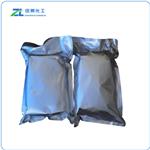- Methyl Orange
-

- $10.00 / 1kg
-
2025-04-01
- CAS:547-58-0
- Min. Order: 1kg
- Purity: 99%
- Supply Ability: 20ton
- Methyl Orange
-

- $25.00 / 1ASSAYS
-
2025-03-31
- CAS:547-58-0
- Min. Order: 100ASSAYS
- Purity: 99.5%
- Supply Ability: 100 mt
- Methyl Orange
-

- $0.00 / 100mg
-
2024-10-24
- CAS:547-58-0
- Min. Order:
- Purity:
- Supply Ability: 10g
Related articles - The synthesis of methyl orange
- Methyl orange is an organic substance with the chemical formula of C14H14N3SO3Na, which is often used as an acid-base indicato....
- Mar 31,2022
|
| | Methyl Orange Chemical Properties |
| Melting point | 300 °C | | density | 0.987 g/mL at 25 °C | | bulk density | 200-400kg/m3 | | Fp | 37 °C | | storage temp. | Store at +5°C to +30°C. | | solubility | 5g/l | | Colour Index | 13025 | | form | Powder/Solid | | pka | 3.4(at 25℃) | | color | Yellow-Orange | | Specific Gravity | 0.987 | | Odor | Odorless | | PH | 6.5 (5g/l, H2O, 20℃) | | PH Range | 3.1(Red)-4.4(Orange) | | Water Solubility | Soluble in ethanol. Partially soluble in hot water. Slightly soluble in cold water and pyrimidine. Insoluble in ether and alcohol. | | λmax | 507nm, 522nm, 464nm | | Merck | 14,6105 | | BRN | 4732884 | | Stability: | Stable. Incompatible with strong oxidizing agents. | | Biological Applications | Detecting microorganisms; treating dermatological diseases,vaginal affections; dental materials; wound dressing materials | | Major Application | Liquid crystals, thin films, sensors, sol-gel matrix, waveguides, host-guest chemistry, display device, corrosion inhibitor, glass coatings, paints, wound dressing materials, pharmaceuticals, dental materials, measuring nucleic acid | | CAS DataBase Reference | 547-58-0 | | EPA Substance Registry System | Methyl orange (547-58-0) |
| | Methyl Orange Usage And Synthesis |
| Description | Methyl orange is an orange, azoic dye. It has a transition range from 3.1 to 4.4. Methyl orange does not have a full spectrum of color change, but has a sharper end point. Methyl orange shows red color in acidic medium (pH < 3.1) and yellow color in basic medium (pH > 4.4).
It is used as a pH-indicator in 0.1% aqueous solution for the titration of mineral acids (not organic acids) and strong bases. Methyl orange is also used in dyeing and printing textiles as a dyestuff.
| | References | [1] https://en.wikipedia.org/wiki/Methyl_orange
[2] Mohammed Bassim Alqaragully (2014) International Journal of Advanced Research in Chemical Science, 1, 48-59
| | Chemical Properties | Orange-yellow powder. Soluble in hotwater; insoluble in alcohol. | | Uses | Methyl orange is a pH indicator frequently used in titrations, also used for histological microscopy. | | Uses | As indicator in 0.1% aqueous solution. pH: 3.1 red, 4.4 yellow. Employed for titrating most mineral acids, strong bases, estimating alkalinity of waters; useless for organic acids. In dyeing and printing of textiles. | | Preparation | 4-Aminobenzenesulfonic acid diazo, and N,N-dimethylaniline coupling. | | Definition | An acid–base indicator
that is red in solutions below a pH of 3 and
yellow above a pH of 4.4. As the transition
range is clearly on the acid side, methyl orange
is suitable for the titration of an acid
with a moderately weak base, such as
sodium carbonate. | | Definition | methyl orange: An organic dyeused as an acid–base indicator. Itchanges from red below pH 3.1 toyellow above pH 4.4 (at 25°C) and isused for titrations involving weakbases. | | General Description | Orange powder. | | Air & Water Reactions | Azo dyes can be explosive when suspended in air at specific concentrations. Insoluble in water. | | Reactivity Profile | Methyl Orange is an azo compound. Azo, diazo, azido compounds can detonate. This applies in particular to organic azides that have been sensitized by the addition of metal salts or strong acids. Toxic gases are formed by mixing materials of this class with acids, aldehydes, amides, carbamates, cyanides, inorganic fluorides, halogenated organics, isocyanates, ketones, metals, nitrides, peroxides, phenols, epoxides, acyl halides, and strong oxidizing or reducing agents. Flammable gases are formed by mixing materials in this group with alkali metals. Explosive combination can occur with strong oxidizing agents, metal salts, peroxides, and sulfides. | | Biological Activity | Methyl Orange is an azo dye which works as a pH indicator. | | Properties and Applications | orange. The strong sulfuric acid for green light yellow, diluted into red orange. The dye solution to join strong hydrochloric acid for orange red; Add thick sodium hydroxide solution for green light yellow.
|
Standard
|
Light Fastness
|
Soaping
|
Persperation Fastness
|
Oxygen bleaching
|
Fastness to seawater
|
|
Fading
|
Stain
|
Fading
|
Stain
|
Fading
|
Stain
|
|
ISO
|
|
|
|
|
|
|
|
|
|
AATCC
|
|
|
|
|
|
|
|
|
| | Purification Methods | Recrystallise it twice from hot water, then wash it with a little EtOH followed by diethyl ether. It is an indicator: pH 3.1 (red) and pH 4.4 (yellow). [Beilstein 16 IV 510.] |
| | Methyl Orange Preparation Products And Raw materials |
|